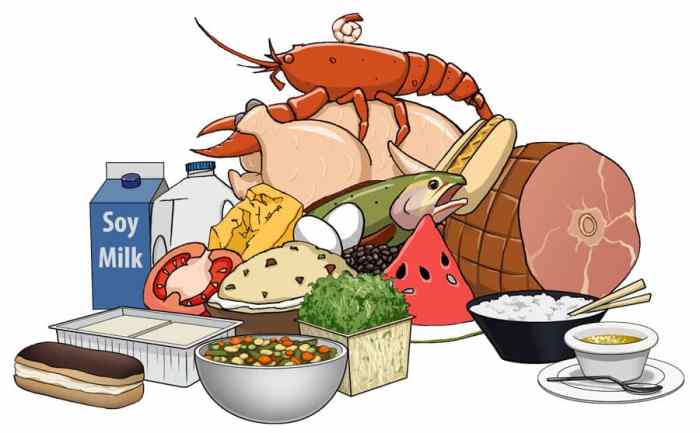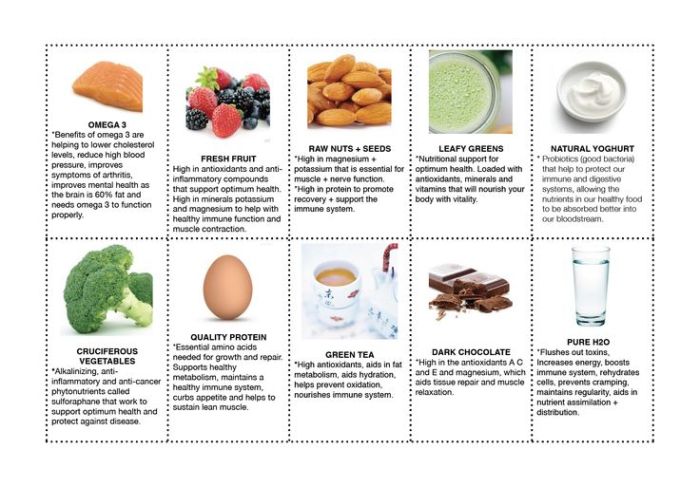The topic of which food item is ideal for bacterial growth servsafe delves into the realm of food safety and microbiology, exploring the factors that contribute to the proliferation of bacteria in food. This discussion holds immense significance in ensuring the safety of our food supply and preventing foodborne illnesses.
Bacteria, ubiquitous microorganisms, can thrive in various environments, including food. Understanding the specific food items that provide an ideal breeding ground for bacteria is crucial for implementing effective food safety practices.
Ideal Food Sources for Bacterial Growth

Bacteria thrive in environments that provide adequate nutrients, moisture, and favorable temperature. Certain food items possess these characteristics, making them ideal for bacterial growth. These include:
- Animal products:Meat, poultry, fish, and dairy products are rich in protein and moisture, providing a conducive environment for bacterial proliferation.
- Eggs:Eggs contain a high amount of protein and lipids, making them a suitable substrate for bacterial growth.
- Cooked rice:Cooked rice can harbor Bacillus cereus, a spore-forming bacteria that can cause food poisoning.
- Sprouts:Sprouts, such as alfalfa and mung beans, are often contaminated with Salmonella or E. coli due to their moist and nutrient-rich nature.
- Leafy greens:Leafy greens, such as lettuce and spinach, can become contaminated with bacteria during cultivation, harvesting, or storage.
Factors Affecting Bacterial Growth

The rate and extent of bacterial growth in food are influenced by several factors:
- Temperature:Bacteria grow optimally within a specific temperature range. The “danger zone” for bacterial growth is between 40°F (4°C) and 140°F (60°C).
- pH:Most bacteria prefer a neutral or slightly acidic pH. However, some bacteria, such as Lactobacillus, can grow in acidic environments.
- Moisture content:Bacteria require moisture for growth. Food items with high moisture content, such as meat and vegetables, are more susceptible to bacterial contamination.
- Oxygen availability:Some bacteria, such as aerobic bacteria, require oxygen for growth, while others, such as anaerobic bacteria, do not.
- Nutrient availability:Bacteria need nutrients, such as proteins, carbohydrates, and fats, for growth. Food items rich in these nutrients are more likely to support bacterial proliferation.
High-Risk Foods

Certain food items pose a higher risk for bacterial growth due to their inherent characteristics or handling practices:
- Raw meat and poultry:These products often harbor bacteria, such as Salmonella and E. coli, which can cause foodborne illnesses.
- Unpasteurized milk and dairy products:Unpasteurized milk may contain harmful bacteria, such as Listeria monocytogenes, which can cause listeriosis.
- Seafood:Seafood can become contaminated with bacteria, such as Vibrio parahaemolyticus, which can cause vibriosis.
- Cooked and reheated foods:If not handled properly, cooked foods can become contaminated with bacteria during reheating or cooling.
- Ready-to-eat foods:These foods are often consumed without further cooking, increasing the risk of bacterial contamination.
Prevention and Control Measures: Which Food Item Is Ideal For Bacterial Growth Servsafe
Effective strategies for preventing and controlling bacterial growth in food include:
| Strategy | Description |
|---|---|
| Proper food handling | Practice good hygiene, wash hands, surfaces, and utensils thoroughly. |
| Temperature control | Keep hot foods hot and cold foods cold to prevent bacterial growth. | Proper storage | Store food at appropriate temperatures and use airtight containers to prevent contamination. |
| Cooking techniques | Cook food to proper internal temperatures to kill bacteria. |
| Rapid cooling | Cool cooked foods rapidly to prevent bacterial growth. |
| Cross-contamination prevention | Avoid cross-contamination by separating raw and cooked foods. |
| Cleaning and sanitizing | Regularly clean and sanitize surfaces and equipment to prevent bacterial buildup. |
FAQ Explained
What are the key factors that influence bacterial growth in food?
Temperature, pH, moisture content, and the presence of nutrients are the primary factors that impact bacterial growth in food.
Why are certain food items more susceptible to bacterial contamination?
Foods with high moisture content, neutral pH, and abundant nutrients provide an ideal environment for bacterial growth.
What are some effective strategies for preventing and controlling bacterial growth in food?
Proper food handling, storage, and cooking techniques, such as refrigeration, freezing, and thorough cooking, are essential for preventing and controlling bacterial growth in food.